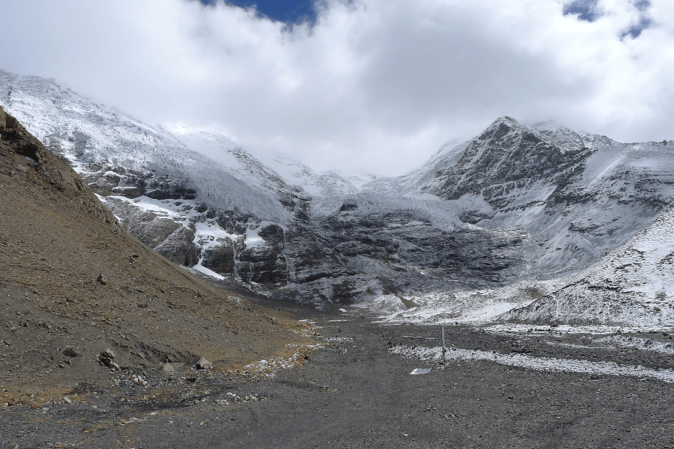The majestic Himalayas, with their awe-inspiring beauty and towering peaks, face an alarming fate. Like a runaway train hurtling towards disaster, climate change threatens to transform this iconic mountain range within the next 80 years.
A group of scientists and researchers from around the world have sounded the alarm, revealing that up to 80 percent of the Himalayan glaciers could vanish by 2100 if global temperatures rise by four degrees Celsius.
Unprecedented and alarming are understatements when describing the rapid melting of glaciers in the Himalayas, as stated by the International Centre for Integrated Mountain Development (ICIMOD) in their recent report. These colossal ice and snow deposits, already exhibiting an astonishing rate of retreat, undergo changes that are highly unlikely to be reversed.

The consequences of this impending disaster are nothing short of catastrophic. As the glaciers melt, a torrential wave of destructive floods, landslides, and avalanches will sweep through the region, leaving a trail of devastation in its wake. Delicate ecosystems, vital infrastructure, and invaluable farmland will bear the brunt of this slow-moving catastrophe.
The Himalayas hold immense significance as the Hindu Kush Himalayan region, stretching over 2,100 miles of breathtaking landscape. It is a visual marvel and the home to the largest volume of ice on Earth outside of the polar regions. Aptly referred to as the “Third Pole,” this majestic realm feeds some of the world’s most renowned rivers, including the Ganges, Indus, Mekong, Yangtse, and Yellow. These waterways have been the lifeblood of civilizations throughout history, nurturing communities and driving progress.
However, the impact of melting glaciers extends beyond the immediate region. Izabella Koziell, the deputy director general of ICIMOD, highlights the far-reaching consequences that could affect the United States and the world at large. She poses a critical question: where will the two billion people, a quarter of the global population, whose livelihoods are threatened by this crisis go? The stakes are high, and urgent action is imperative to safeguard lives and mitigate the impending humanitarian and environmental catastrophe.

Overall, the fate of the Himalayas hangs precariously in the balance as climate change accelerates the melting of its glaciers. Urgent measures must be taken to prevent irreversible damage to ecosystems, infrastructure, and livelihoods. The global community must unite, transcending borders and interests, to combat climate change and preserve the Himalayas’ splendor for generations to come.
The clock is ticking, and the Himalayas desperately need our unwavering commitment and immediate action.


